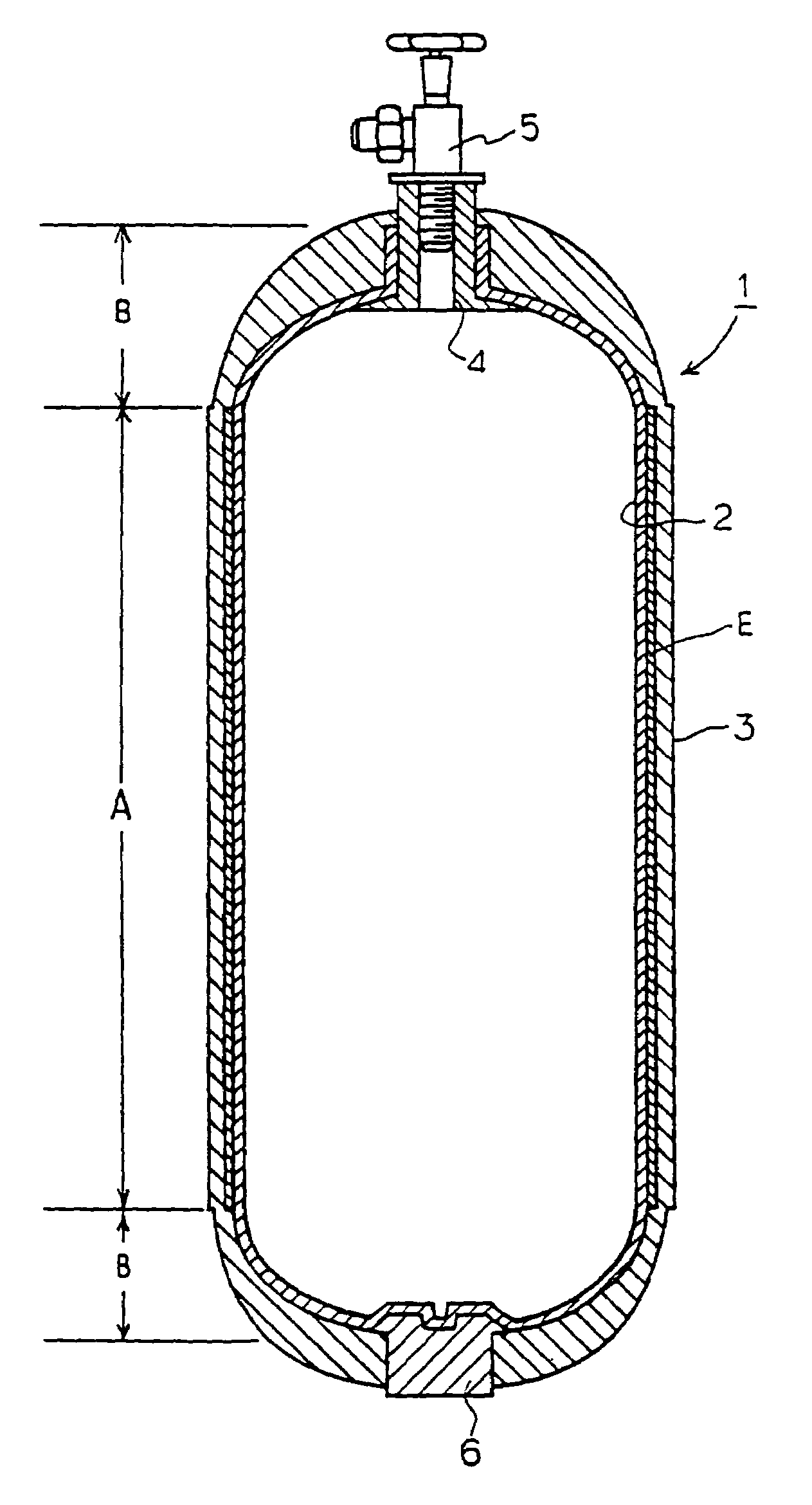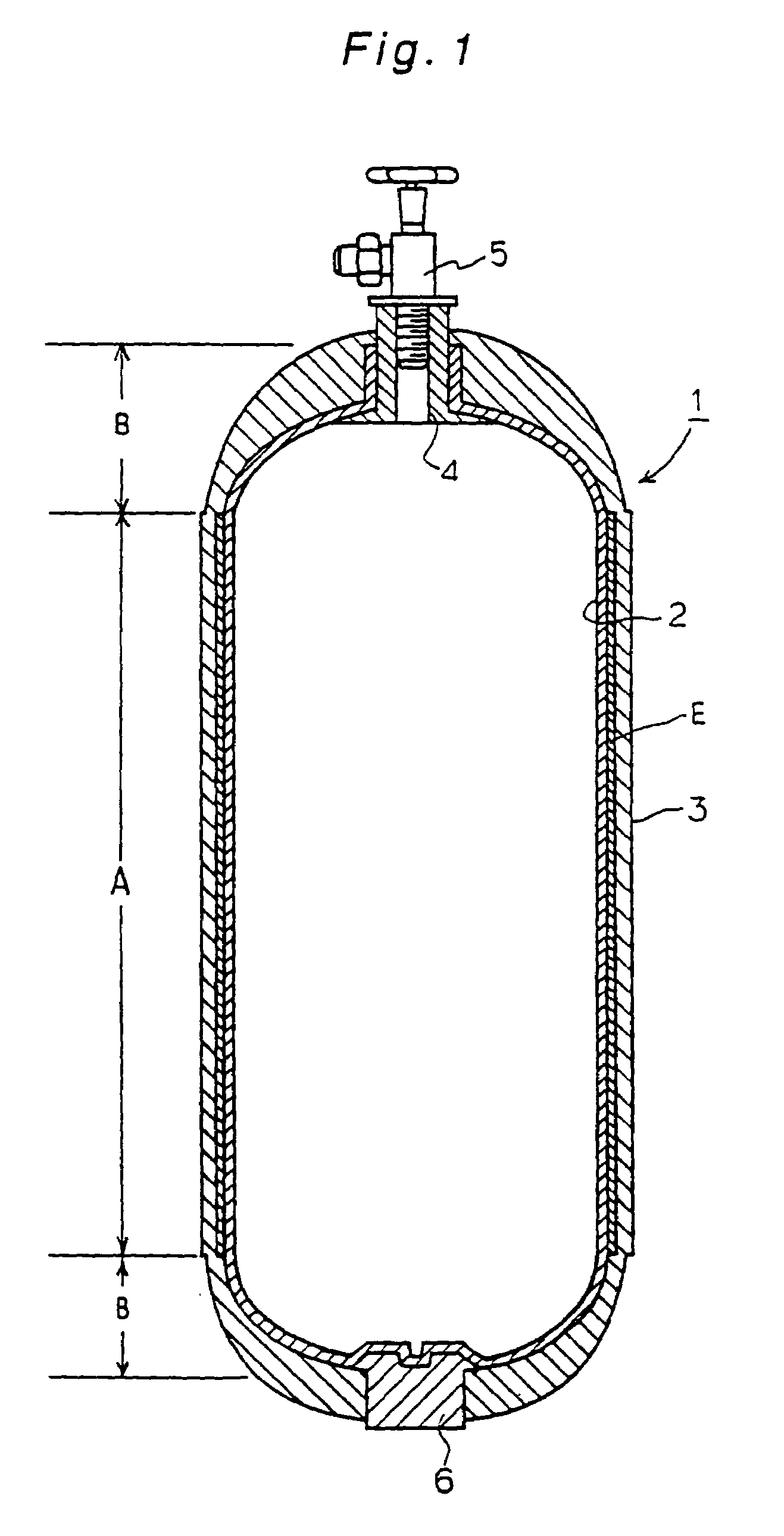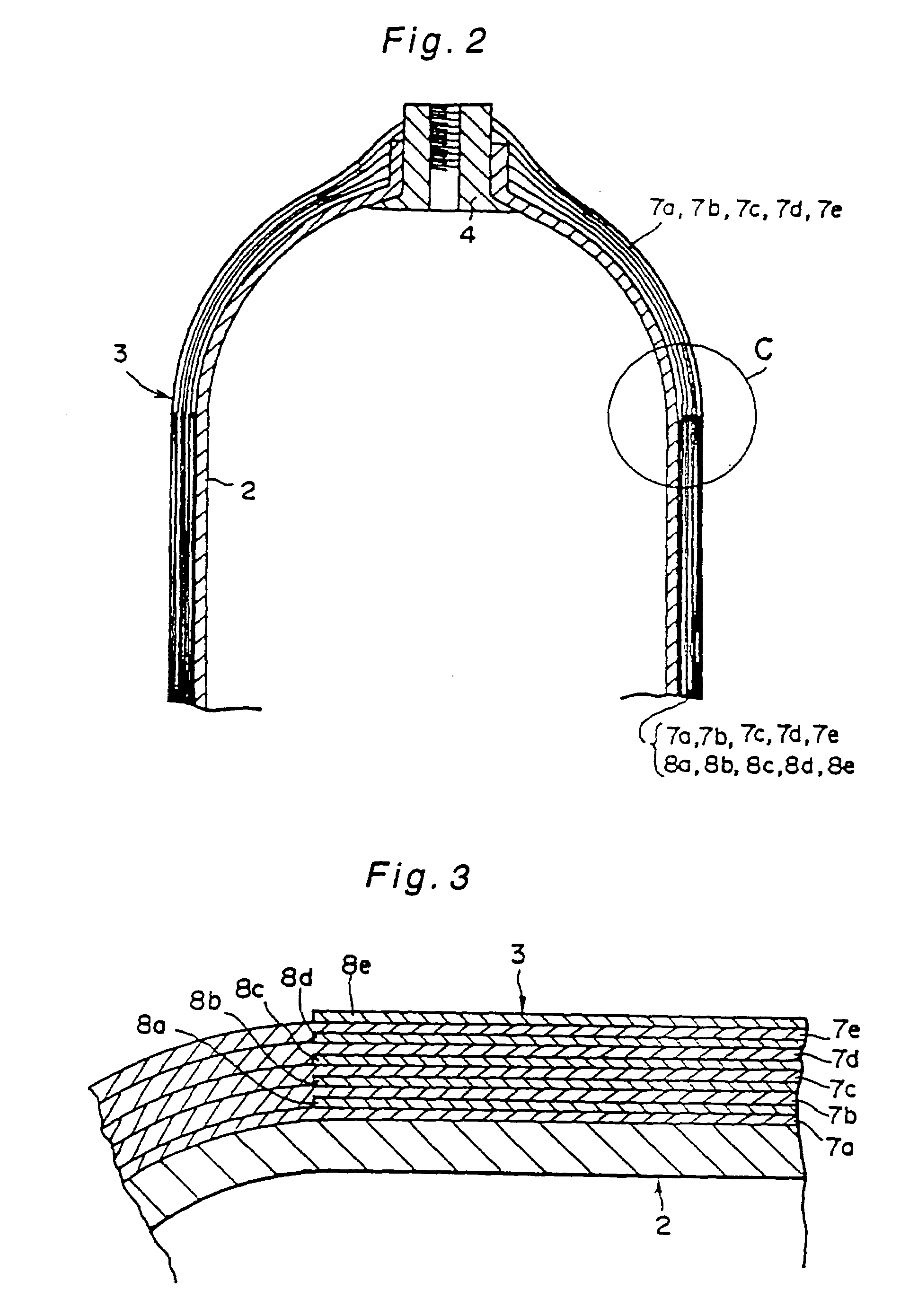Pressure vessel and process for producing the same
a technology of pressure vessel and pressure vessel, which is applied in the direction of vessel construction details, mechanical equipment, other domestic objects, etc., can solve the problems of shortening the drivability distance of the motor vehicle per unit, increasing the total weight of the motor vehicle, and further shortening the drivability distance of the motor vehicle. , to achieve the effect of excellent internal pressure, excellent reliability and light weigh
- Summary
- Abstract
- Description
- Claims
- Application Information
AI Technical Summary
Benefits of technology
Problems solved by technology
Method used
Image
Examples
example 1
[0211]A blow-molded inner shell (200 mm in outer diameter, 1,000 mm in the overall length excluding the nozzle installation portion, and 2 mm in wall thickness) made of high density polyethylene resin was used as a mandrel, to form an outer shell on an inner shell by a filament winding method. For the filament winding, a carbon fiber yarn (12,000 filaments of 7 μm in single fiber diameter, 4.6 GPa in tensile strength, and 2.2% in tensile breaking strain) impregnated with an epoxy resin (4% in tensile breaking strain) was wound to form a ±3° layer, 88° layer, and ±45° layer (the angles are with reference to the axial direction of the pressure vessel) in this order, with the volume ratio of the carbon fiber yarn in the ±3° layer: that in the 88° layer: that in the ±45° layer kept at 1:2:2, and the inner shell with the carbon fiber yarn wound around it was heated at 130° C. in an oven for 6 hours, to form the main body of the pressure vessel. The outer shell thus obtained was measured ...
example 2
[0217]A dimethyl sulfoxide solution containing 20% of an acrylic copolymer consisting of 99.5 wt % of acrylonitrile and 0.5 wt % of itaconic acid (the polymer was 600 poises in the solution viscosity at 45° C.) was discharged through a nozzle plate once into a 3 mm air space, and introduced into a stationary coagulating bath at 5° C. containing 3% of dimethyl sulfoxide, to obtain coagulated fibers. In succession, they were washed by water, drawn in hot water, treated with an amino modified silicone oiling agent, dried, compacted, drawn in pressurised steam to a total ratio of 10 times, and wound to obtain a precursor of 12,000 filaments of 1.0 denier in single fiber thickness (with 1.55 wt % of oiling agent). Subsequently, it was treated to be flame retardant in air with a temperature profile of 230 / 260° C., and introduced into a carbonizing furnace at 1,300° C. in maximum temperature, being carbonized in nitrogen gas atmosphere at a heating rate of about 300° C. / min in a temperatur...
example 3
[0219]A pressure vessel configured as shown in FIGS. 1 and 14 was manufactured as described in Example 1. The pressure vessel was charged with helium gas up to an internal pressure of 20 MPa, and placed in a sealed container for 1 hour. The quantity of the helium gas in the sealed container was measured by gas chromatography, and found to be 0. That is, the gas leakage from the pressure vessel was 0.
PUM
| Property | Measurement | Unit |
|---|---|---|
| tensile modulus | aaaaa | aaaaa |
| tensile modulus | aaaaa | aaaaa |
| tensile modulus | aaaaa | aaaaa |
Abstract
Description
Claims
Application Information
 Login to View More
Login to View More - R&D
- Intellectual Property
- Life Sciences
- Materials
- Tech Scout
- Unparalleled Data Quality
- Higher Quality Content
- 60% Fewer Hallucinations
Browse by: Latest US Patents, China's latest patents, Technical Efficacy Thesaurus, Application Domain, Technology Topic, Popular Technical Reports.
© 2025 PatSnap. All rights reserved.Legal|Privacy policy|Modern Slavery Act Transparency Statement|Sitemap|About US| Contact US: help@patsnap.com



